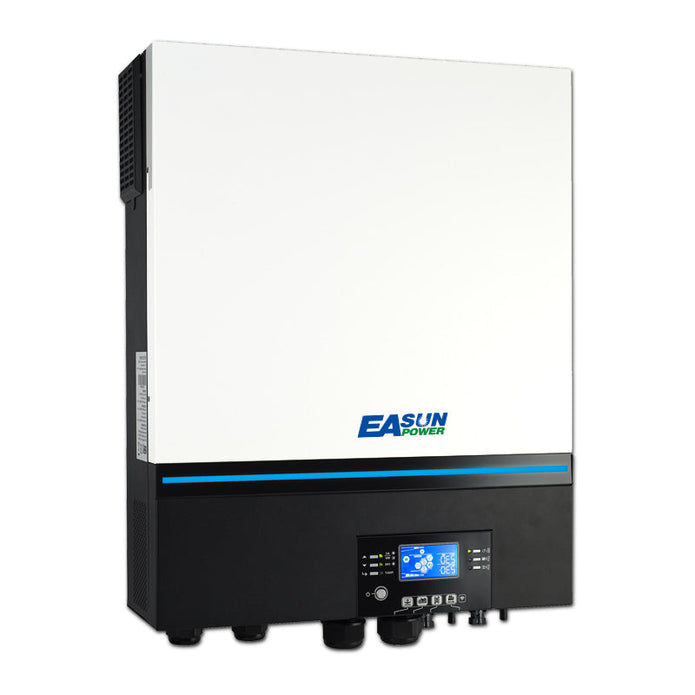Unlock the Secrets to Mastering Your 11kw Inverter for Maximum Solar Power Efficiency!
Solar energy has emerged as a sustainable solution for powering homes, making it increasingly vital to understand the nuances of solar systems. At the heart of these systems lies the inverter, a device that converts direct current (DC) generated by solar panels into alternating current (AC), which is used in most household appliances. An 11kw inverter is particularly valuable for homeowners looking to maximize their solar power potential. This robust inverter allows for significant energy conversion, making it suitable for larger homes or those with high energy demands. In this guide, we will explore effective strategies to optimize the use of an 11kw inverter, ensuring you harness the full potential of your solar energy system.

Understanding the Basics of Solar Inverters
Solar inverters play a crucial role in the functionality of any solar energy system. They serve as the intermediary between the solar panels and your home's electrical system. An 11kw inverter, in particular, is designed to handle higher energy loads, making it ideal for larger households or those with multiple energy-consuming devices. Unlike smaller inverters, which can struggle during peak energy production times, an 11kw inverter ensures that you can utilize the maximum amount of energy produced by your solar panels without any significant losses. There are various types of solar inverters, including string inverters, microinverters, and power optimizers. The 11kw model often falls into the category of string inverters, which are commonly used in residential setups due to their reliability and efficiency. Understanding these basics sets the foundation for effectively managing and utilizing your solar energy system.
Installation Considerations for Your 11kw Inverter
Proper installation of your 11kw inverter is critical for optimal performance. Several key factors must be considered during the installation process. First, the location of the inverter should be chosen carefully; it is recommended to place it in a shaded area to prevent overheating while still being close to the solar panels for efficient wiring. Compatibility with your solar panels is another essential factor; ensure that the inverter's specifications match the output of your solar array. Safety measures must also be prioritized, including proper grounding and circuit protection to prevent electrical hazards. Professional installation is highly recommended, as experienced technicians can ensure that all components work together seamlessly and comply with local regulations. A friend of mine recently went through this process and noted how crucial it was to have experts handle the installation, as it saved him time and potential headaches down the road.
Optimizing Your Solar Power Efficiency
Once your 11kw inverter is installed, the focus shifts to maximizing its efficiency. Regular monitoring of energy production is vital; many modern inverters come with monitoring systems that allow you to track performance in real-time. By keeping an eye on energy output, you can identify any drops in performance that may signal an issue. Adjusting settings can also contribute to optimization; for instance, configuring the inverter to operate during peak sunlight hours can enhance energy capture. Routine maintenance is another essential strategy; this includes cleaning the inverter and checking connections to ensure everything is functioning correctly. I remember a conversation with another friend who invested in a solar system, and she emphasized how a little maintenance made a huge difference in her energy efficiency over time.
Common Issues and Troubleshooting Tips
Even with the best equipment, issues can arise with your 11kw inverter. Some common problems include inverter shutdowns, poor energy production, and error codes displayed on the unit. If your inverter shuts down unexpectedly, it may be due to overheating or a drop in voltage from the solar panels. In such cases, ensure that the inverter is in a well-ventilated area and check for any shading on the panels. If you notice a decrease in energy production, inspect the solar panels for dirt, debris, or damage that could hinder performance. Familiarizing yourself with the inverter's error codes is also helpful; many inverters come with user manuals that explain these codes and suggest troubleshooting steps. A neighbor of mine faced an issue with his inverter not producing energy, and after checking the manual, he discovered a simple resetting process that solved the problem quickly.
Future Trends in Solar Inverter Technology
The world of solar inverter technology is continuously evolving. Emerging trends include the development of smart inverters equipped with advanced communication capabilities and artificial intelligence. These smart inverters can optimize energy conversion in real-time, responding to changing weather conditions and energy demands. Additionally, as battery storage technologies improve, inverters are becoming more integrated with energy storage systems, allowing homeowners to store excess energy generated during the day for use during the night. Keeping an eye on these trends can help homeowners make informed decisions about upgrades and enhancements to their solar systems, ensuring they stay ahead in the renewable energy game. My brother recently attended a solar expo where he learned about these advancements, and he’s excited about the potential improvements they could bring to his own solar setup.
Strategies for Optimizing Your Solar Energy System
In conclusion, mastering your 11kw inverter is essential for maximizing the efficiency of your home solar system. By understanding the basics of solar inverters, carefully considering installation factors, and implementing strategies for optimization, you can ensure that your solar energy system operates at its fullest potential. Regular maintenance and troubleshooting are key to addressing any issues that may arise, while staying informed about future trends can help you make valuable upgrades. Embrace these strategies to enjoy the numerous benefits of solar power, including reduced energy bills and a smaller carbon footprint. The journey toward optimal solar energy conversion is well worth the effort!







